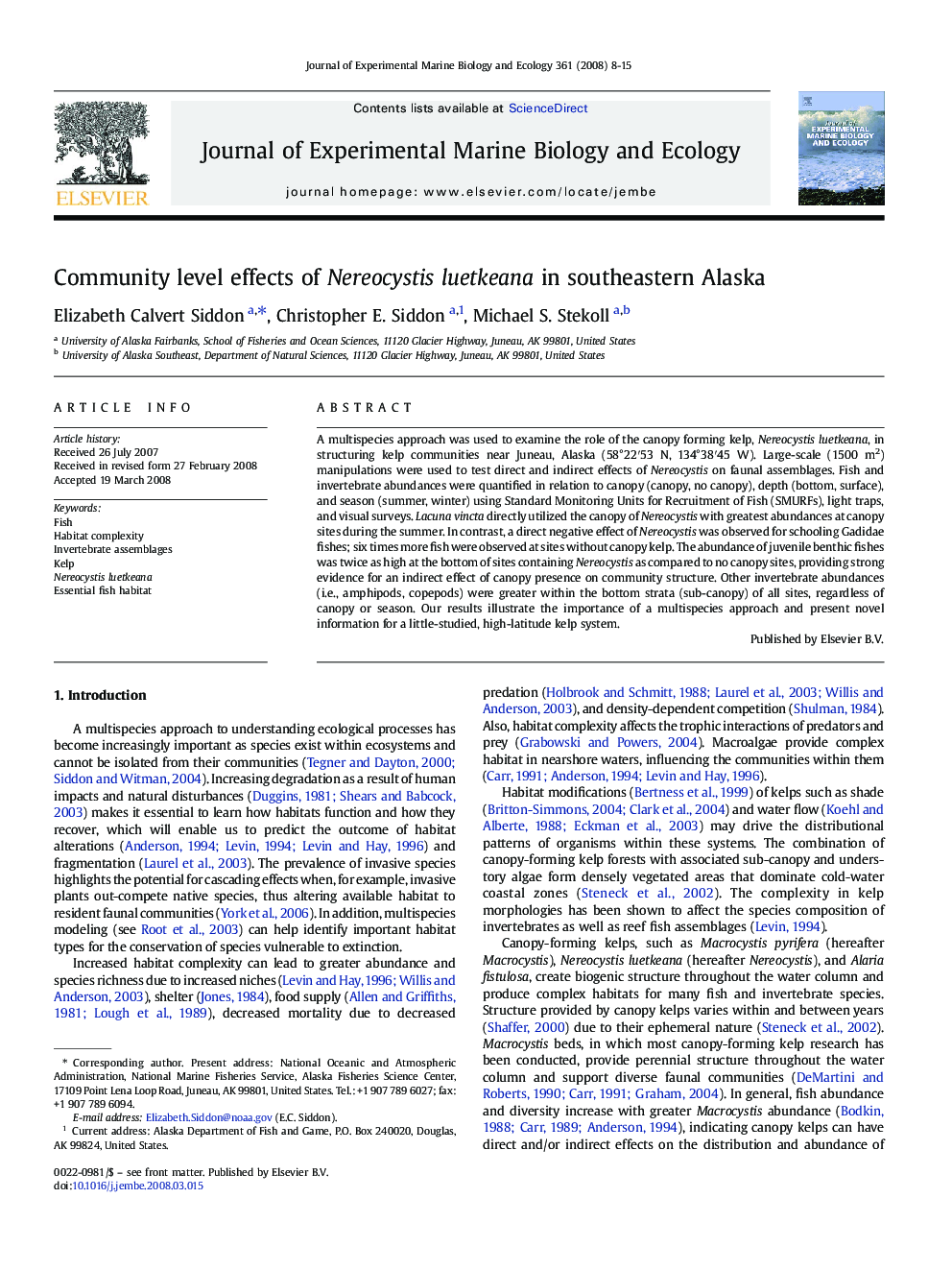| Article ID | Journal | Published Year | Pages | File Type |
|---|---|---|---|---|
| 4397261 | Journal of Experimental Marine Biology and Ecology | 2008 | 8 Pages |
A multispecies approach was used to examine the role of the canopy forming kelp, Nereocystis luetkeana, in structuring kelp communities near Juneau, Alaska (58°22′53 N, 134°38′45 W). Large-scale (1500 m2) manipulations were used to test direct and indirect effects of Nereocystis on faunal assemblages. Fish and invertebrate abundances were quantified in relation to canopy (canopy, no canopy), depth (bottom, surface), and season (summer, winter) using Standard Monitoring Units for Recruitment of Fish (SMURFs), light traps, and visual surveys. Lacuna vincta directly utilized the canopy of Nereocystis with greatest abundances at canopy sites during the summer. In contrast, a direct negative effect of Nereocystis was observed for schooling Gadidae fishes; six times more fish were observed at sites without canopy kelp. The abundance of juvenile benthic fishes was twice as high at the bottom of sites containing Nereocystis as compared to no canopy sites, providing strong evidence for an indirect effect of canopy presence on community structure. Other invertebrate abundances (i.e., amphipods, copepods) were greater within the bottom strata (sub-canopy) of all sites, regardless of canopy or season. Our results illustrate the importance of a multispecies approach and present novel information for a little-studied, high-latitude kelp system.
